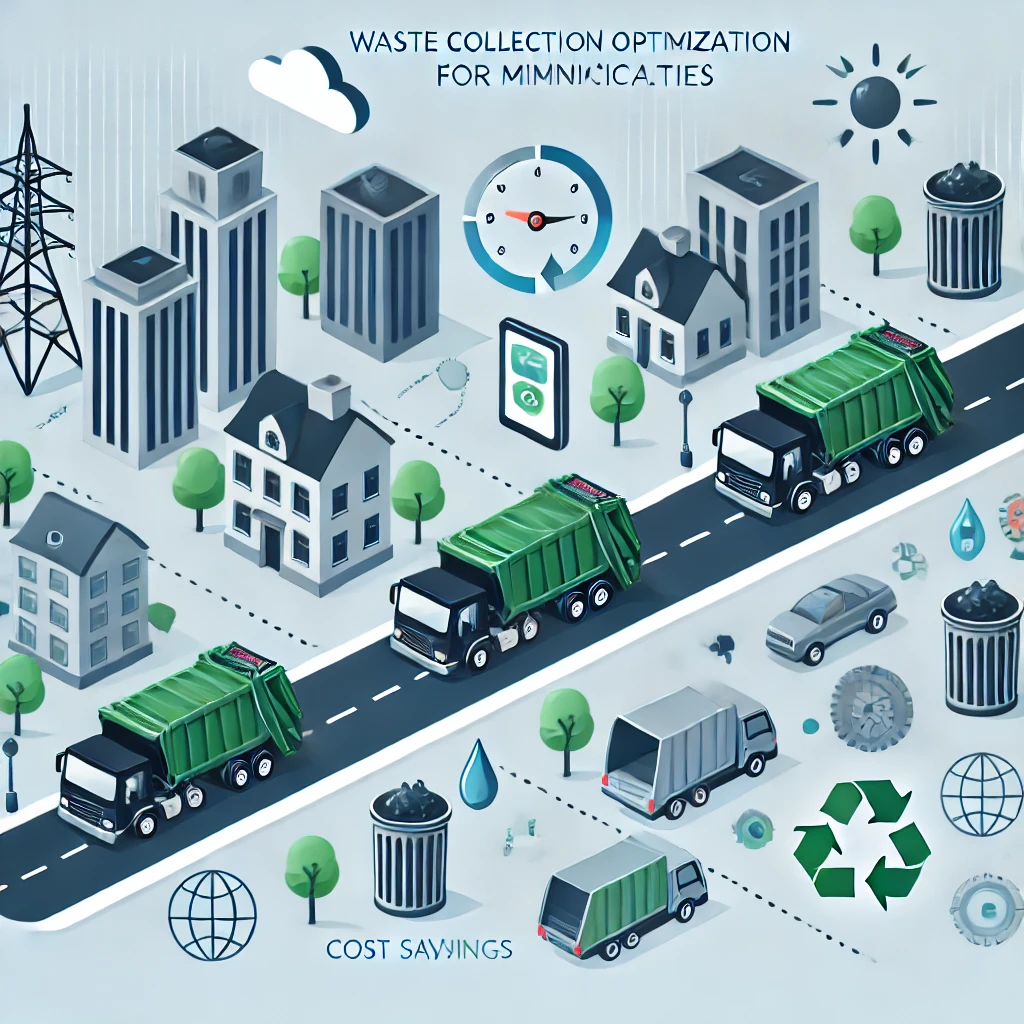
How Can Municipal Waste Collection Activities Be Optimized?
How to Optimize Municipal Waste Collection Activities? What Are the Benefits?
Municipalities fulfill the responsibility of protecting both environmental and public health by collecting and cleaning thousands of garbage containers in their cities every day. However, route optimization is crucial for carrying out these activities effectively. A good vehicle route optimization plan not only increases operational efficiency but also reduces fuel costs, minimizes the carbon footprint, and enhances resident satisfaction. So, why and how should municipalities employ route optimization in their waste collection activities?
What is Route Optimization?
Route optimization is the process of determining the most efficient route between specific delivery, collection, or service points.
- In waste collection operations, this optimization ensures that thousands of containers are collected in the shortest time with the least fuel consumption.
- Optimal routes are created using mathematical models such as the Traveling Salesman Problem (TSP) and Vehicle Routing Problem (VRP).
- This complex planning process is automated with route optimization software.
Why Do Municipalities Need Route Optimization?
The primary challenges municipalities face in waste collection activities include:
-
Maximizing Resource Utilization Every day, hundreds of garbage trucks are tasked with checking and collecting thousands of garbage containers citywide. Inadequate planning in these operations can lead to:
- Excessive fuel consumption,
- Unnecessary time loss,
- Workforce wastage.
-
Saving Time and Fuel Municipalities need to conduct waste collection operations during early morning and evening hours to avoid heavy traffic. Therefore:
- Shortest path algorithms,
- Dynamic routes, and schedule optimization technologies help trucks complete their tasks as quickly as possible.
-
Reducing Environmental Impact The green logistics approach also includes municipalities’ goals to reduce their carbon footprint. Route optimization means less fuel consumption and therefore lower carbon emissions.
-
Improving Citizen Satisfaction Customer satisfaction is very important for city residents. Timely collection and cleaning of garbage containers create a cleaner and more livable city environment.
What Benefits Does Route Optimization Offer Municipalities?
-
Reduces Fuel Costs Route optimization prevents each vehicle from traveling unnecessary distances. GPS tracking and fleet tracking technologies allow real-time route improvements by monitoring the trucks' locations.
- Fuel costs can be reduced by 20% to 30%.
- Unnecessary stops and distances are eliminated.
-
Saves Time Using a route planner optimizes the routes of garbage trucks within the city, enabling them to collect more containers in less time. This allows for more efficient operations both in the morning and evening.
-
Increases Operational Efficiency
- Through territory management, cities can be divided into zones, and the most suitable number of trucks can be assigned to each zone.
- Asset tracking allows monitoring the fill levels and conditions of garbage containers.
-
Ensures Environmental Sustainability By reducing carbon emissions, municipalities offer a more sustainable cleaning service. This increases the quality of life for city residents and creates an eco-friendly image.
-
Cost Reduction with Fewer Vehicles Route management systems optimize the number of trucks required in the city. Using fewer trucks provides more cost savings.
Technology-Integrated Optimization
-
Telematics and GPS-Supported Systems
- Telematics and GPS tracking monitor the locations and movements of trucks to determine the best routes in real-time.
- Provide instant updates for traffic congestion or emergencies.
-
Precise Planning with Geofencing
- Geofencing ensures that garbage trucks do not leave designated areas.
- This feature improves operational control within the city.
-
Artificial Intelligence and Mapping Technologies
- Artificial intelligence-supported software uses city maps and isochrones to perform the most effective route planning.
- Visual planning is made possible with maps integration.
Real Data and Results from Municipalities
A municipality using route optimization applications successfully reduced its daily average fuel costs by 25% while shortening waste collection times by 30%. This not only increased resident satisfaction but also minimized environmental impacts.
In another municipality, hazmat optimization made hazardous waste collection faster and safer. Field service optimization improved the management of field workers and kept costs under control.
Conclusion
Route optimization in municipal waste collection operations saves time, fuel, and costs while providing residents with a cleaner and more livable environment. An integrated approach with route planning, logistics management, and fleet management technologies helps manage these processes effectively.
Municipalities should continue to invest in route optimization for cleaner cities and more effective logistics operations.